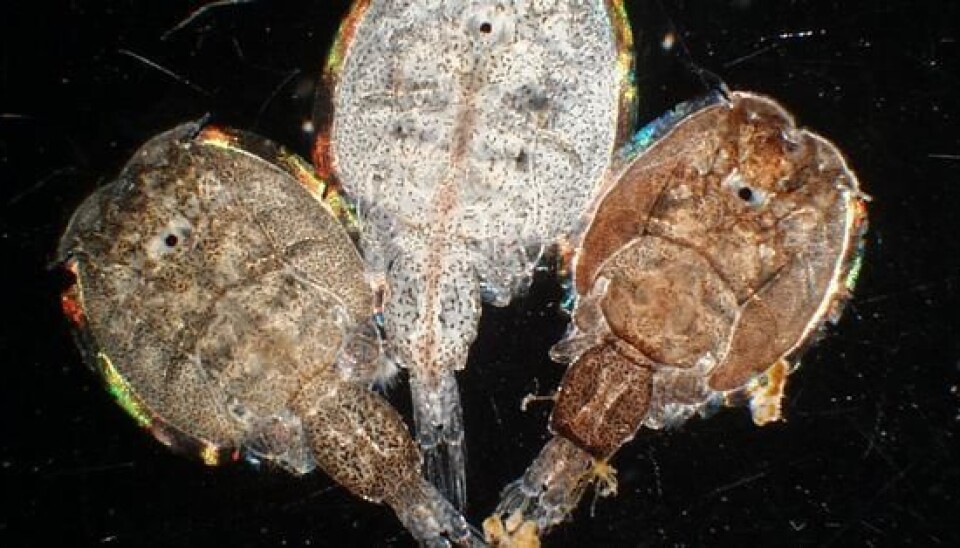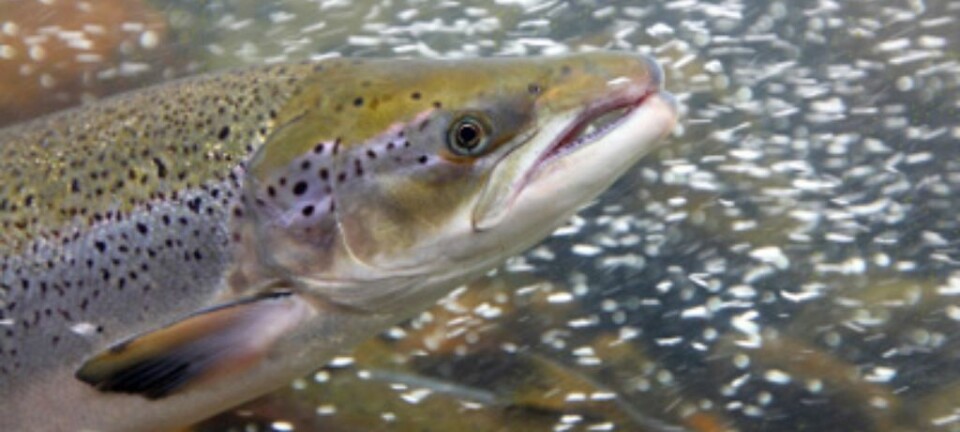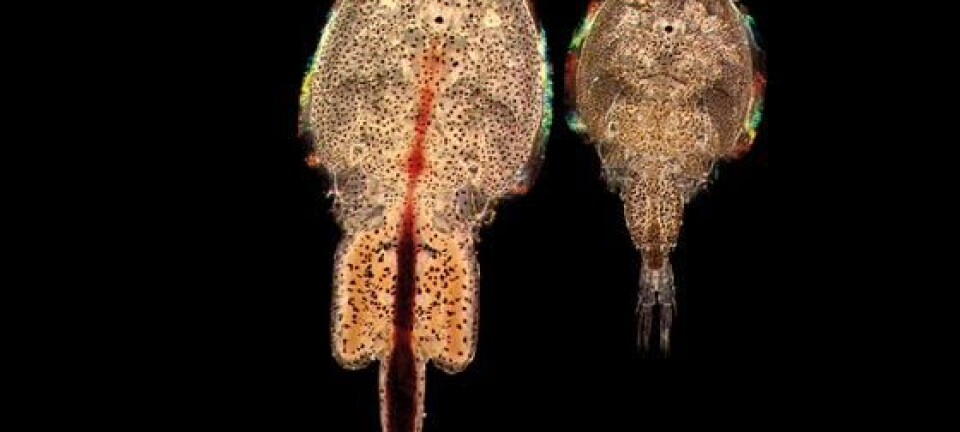This article was produced and financed by Institute of Marine Research

Mutated salmon louse DNA spread throughout the North Atlantic in 11 years or less
A recent study has demonstrated that genetic changes giving the salmon louse partial resistance towards one of the most commonly used delousing chemicals in marine aquaculture (emamectin benzoate/Slice) have spread to salmon lice in the entire North Atlantic in a maximum of just 11 years.
Denne artikkelen er over ti år gammel og kan inneholde utdatert informasjon.
This is the first time that scientists have managed to simultaneously document that a mutation that arose in just one or few animals in the marine environment have spread to the whole population, and at the same time managed to document how long this process took.
“What´s unique here is that we have managed to document that a trait can spread to the entire North Atlantic in such a short period of time,” says Kevin Glover who is the research group leader for the population genetics group at the Institute of Marine Research, and a professor at the Sea lice Research Centre at the University of Bergen.
However, Glover cautions - even though the trait has been spread to the entire population of salmon lice in the North Atlantic, this does not mean that all lice carry the mutation(s).
Mutations are normal
Mutations are constantly occurring in any organism, and they spread in the population through reproduction. However, it is only when a mutation offers the organism improved survival or competitive advantage over its siblings that the mutated gene is rapidly spread in the population like we have documented here.
“The genetic changes we have observed mean that many salmon lice now tolerate higher dosages of Slice. This can and has resulted in treatment failure on commercial farms throughout the North
Atlantic where this chemical is used to treat salmon lice infestations,” says Glover.
We cannot avoid dispersal
Since the lice supporting these mutations display increased resistance towards Slice, some of them survived chemical treatments using this agent. These survivors thereafter had offspring that displayed this increased tolerance. After a short period of time, and more chemical treatments, the frequency of lice displaying reduced sensitivity in the region where this originated, rapidly increased. These lice displaying reduced sensitivity, have thereafter been dispersed further afield by attaching to farmed escaped salmon that have migrated long distances, and/or by infecting wild salmon and trout migrating past these farms. Wild salmon from both sides of the Atlantic meet on the oceanic feeding grounds. Here they can cross-infect each other and when they return to their respective countries, they take with them some of the lice displaying the resistance genes. It is in this manner Slice resistance has quickly spread across the entire North Atlantic.
Dispersal occurred in just a few years
“Slice was first used in commercial salmon farming in 1999, and the samples for our study were collected from throughout the North Atlantic in 2010. We are therefore sure that the dispersal of mutation entailed by increased resistance have spread from one geographic region to all in a maximal time-scale of 11 years,” says Glover.
Do not know where the mutation first originated
Scientists in the project are confident that the mutation(s) causing the observed decreased sensitivity to Slice originated in one place.
“We see that in contrast to genetic variation in all other chromosomes, there is strongly reduced genetic variation in the chromosome where the causative mutations for this increased tolerance are located. Furthermore, we see that the genetic code in the region on this chromosome is identical or almost identical in many lice throughout the entire North Atlantic," says Glover.
This demonstrates that the mutation(s) causing the resistance originated in a limited geographic area and was thereafter quickly spread throughout the North Atlantic.
“We cannot say for sure where these genetic changes first originated. However, we know that the first reports of treatment failure to Slice, were from fish farms in Ireland in 2005. It is therefore not unthinkable that the origin of the observed genetic changes was in Ireland,” Glover says.
Represents a challenge for the management of pesticide resistance
The implications of the study are that when salmon lice develop resistance to a new chemical used for delousing on salmon farms, this will be quickly spread to all regions of the North Atlantic. This documented example took a maximum of 11 years, but it was probably spread faster.
“In the real world this means that how one country chooses to manage resistance development on their farms, will affect other countries throughout the entire North Atlantic”.
Basically, we are all in the same boat together so to speak, indicates Glover. This is an important point that the management authorities need to take home.

































